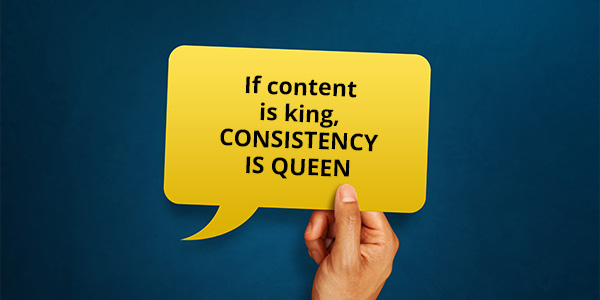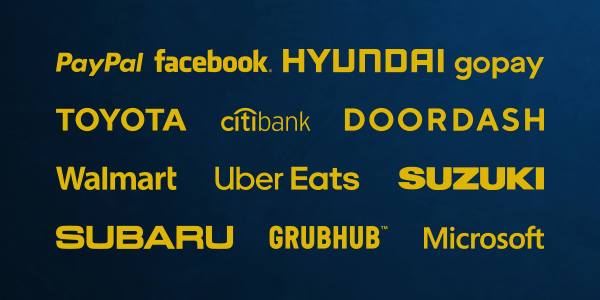Your brand is your most powerful marketing tool. It embodies your history, culture, products/services, perspective, and people. While you may feel like your company has taken the necessary steps to clearly define and promote what makes you unique, there is always more you can do.
Below are 10 tips for reinforcing your brand and growing brand awareness.

1. Expand your definition of “brand.” (A logo alone isn’t a brand.)
Your brand is more than your logo and other visual elements. That confusion can arise because the term “branding” is often applied to those elements.
When applying your brand, you should think beyond graphic design and consider all its aspects. For example, your brand should be reflected in the look, feel, and use of things like your:
- Stationery system
- Business forms
- Reputation/word-of-mouth advertising
- Public relations
- Proposals
- Social media presence
- Products/services
- Advertising
- User experience
- Blog and content marketing
- Vehicles
- Signage
- Email marketing
- Direct mail
- Messaging
- Exhibits and tradeshows
- Digital advertising
- Website(s)
- Live events
- Voicemail greetings
- E-signatures
- Print collateral
- Publications
- Presentations

2. Be genuine in your social media and engage with your followers.
Here’s a test: If you would scroll right past your company’s social media posts, others will, too. Don’t just publish posts so you can say you did—create engaging content!
That said, don’t dilute your brand simply to get in on the latest social media trend. People see through corporate gimmicks and will roast a brand for mindlessly jumping on the bandwagon. Be true to your goals, and be sure your content is meaningful to your audience. Success in social media isn’t about your number of followers but rather the number of followers who engage with your content. And you’ve got to be genuine and involved to increase engagement.

3. Write meaningful blog posts.
There was a time when organizations would “game the system” by writing keyword-laden blog articles to gain SEO value. The posts were poorly written and pumped out in large quantities at low prices. But you can’t fool Google—at least not for long. They and others updated their algorithms, and companies still using this strategy are no longer getting any benefits.
Search engines strive to display content that people find useful. You can determine how beneficial an article is by how long people spend reading it. If visitors consistently leave the page after a few seconds, you know the content isn’t effective or engaging, and so does the search engine.
When writing a blog post ask yourself these three questions:
- Does this content resonate with my target audience?
- Does this content align with my brand?
- Most importantly: Would I want to read this article?
And keep in mind that even an engaged reader wants to get the information they’re after quickly. Writing content so that it’s “skimmable” is important and appreciated by your audience.

4. Prioritize a positive customer experience.
You want people to come away from every interaction with your brand—brief or extended—feeling positive about the experience. And there are countless ways and places those interactions take place.
To create positive customer experiences, first identify and document your audience personas. Who is your audience generally? What are the personal and professional characteristics of audience members? How do they enter and move through the sales funnel? Then ask yourself if you’ve faithfully represented your brand while meeting their needs at every stage of the process to maximize conversions.
If you find any rough spots or pain points along the customer journey, you’ll likely see people “bailing out” at those points. We’ve all grown to expect convenience and ease when working with companies. If engaging with your business takes more time or effort than working with your competition, you’re going to lose sales and market share.
Steps in the journey where having a strong brand is especially important to include:
- A prospect sees your advertising. Studies show they won’t respond to the first ad they see. So, building awareness is essential. Are all your ads consistently branded and aligned with your other marketing efforts?
- A prospect completes a contact form on your website. How long before they get a response? Is your salesperson responding in a professional manner? Does their email signature adhere to your brand guidelines?
- A customer decides to subscribe to your service. How many steps are required? Are you communicating regularly with them to stay top of mind? Is paying for the service intuitive and convenient?
These are just a few of what could be hundreds of touchpoints with your audience. You should assess and optimize all of them! Customers will shift allegiances away from even excellent products or services if the customer experience is subpar.

5. Create a brand guide. (Consistency is key!)
At A-Train, we joke that the best brands are “boring” or “predictable.” That’s not true, of course. What we mean is that they’re consistent. Consistency is essential as you try to build brand awareness. People need to see your brand 5 to 7 times before they begin to recognize it. For that reason, companies that are consistent in how they present their brand often see revenue increase by 33%. (Lucidpress survey)
Consistency in branding requires clearly defined and documented rules. This is what a brand guide provides. At a minimum, it should include requirements for your visual branding and messaging as well as your company mission statement.
You should make the guide available to all staff members and contractors who market your company with the understanding that its guidelines must be adhered to at all times. Some companies find it’s good to have a “compliance specialist” to ensure your brand doesn’t start to deviate from its approved characteristics. And, of course, if your brand isn’t effective or starts to lose effectiveness due to changes in your market or offerings, you should consider a rebrand (and we can help).

6. Stay relevant and communicate with your audience regularly.
Markets today change at a faster pace than ever before, and consumers don’t tend to retain information for long! If you don’t maintain contact with them, they’ll soon start to forget about you.
You can stay relevant and engaged by:
- Doing periodic email marketing, which can be sales- or awareness-focused
- Interacting with them on social media
- Writing blogs they find useful
- Promoting your top-selling products and services by showing what other customers think about them (see below)

7. Manage your reputation.
Regardless of what you say about your offerings, people typically trust the opinions of their peers over your marketing materials. Be proactive in gathering and publishing positive reviews (particularly on your website) while also doing your best to address negative ones.

8. Frequently review your messaging alignment and consistency.
We’ve said it before and we’ll say it again: Consistency is essential to brand awareness and trust. It’s easy for messaging to become just a little different across the many channels you use—your website, ads, social media, collateral, etc. It’s important that you don’t confuse your audience or send mixed signals, so review your messaging regularly. It can be helpful to use your mission statement as the measuring stick.

9. Be memorable to break through the “noise.”
The competitive landscape gets more crowded every day. Is your brand still easy to spot, or is it getting lost in the noise like in the examples shown above?
Companies with unique brands stand out, generate more interest, and typically get more business. The bland brands in their market are then left to fight over the scraps, often competing on price for bargain shoppers.
So, be sure your brand catches the attention of your audience. Maybe don’t go full “Puppy Monkey Baby,” but take some well-calculated risks with the goal of being more memorable.

10. Avoid stock photography.
Stock photos are designed to appeal to a wide variety of companies. That characteristic gives them broader appeal and sales potential. But people can spot stock photography a mile away, and they tend to associate it with not being genuine—since it isn’t!
Whenever possible, avoid using stock photography. Photos of your actual staff, building, products, etc., will perform better than purchased images. And if you have to use stock photos (due to time or budget constraints, for example), keep these tips in mind:
- All stock photos will have a slightly different color balance, tones, etc. Find photos with a similar look, or work with a designer to color grade and treat photos so they have a consistent look.
- Edit photos so that they appear original. For example, you can recolor elements within a photo so they align with your brand palette. Or you can add your logo to elements in the photo, like putting it on the coffee cup the model is holding.
- Select photos that don’t look “stock.” There are companies that offer curated photos that have a more natural, realistic look. Find them if you can, and avoid cliché images like "Hide the Pain Harold" shown above.
Properly reinforcing your brand is a multidisciplinary process that requires the skills of experienced copywriters, designers, and strategists.
If you don’t know where to start on a brand development/polishing effort, contact A-Train Marketing. We can help you get on the right path with our Course Line marketing strategy sessions.